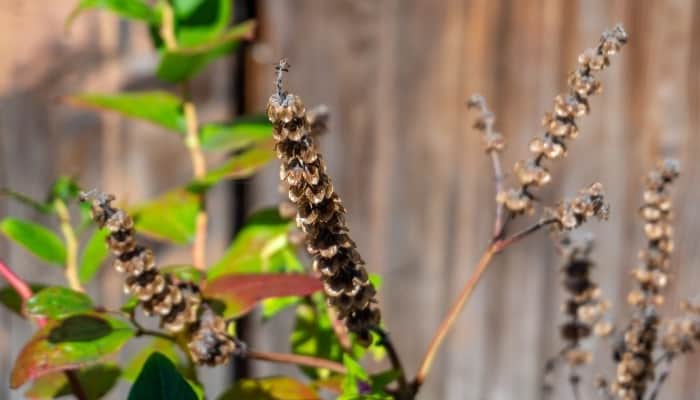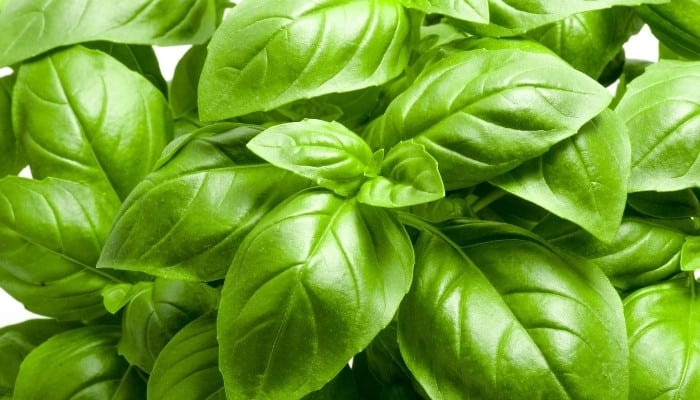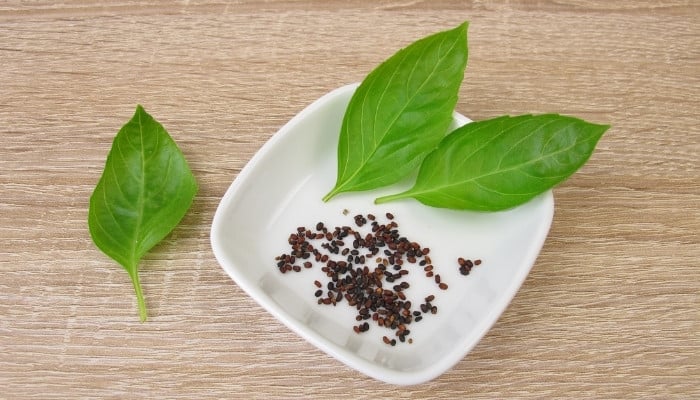Basil is a widely used kitchen herb found all over the world. It is commonly used to season dishes such as potatoes and turkey, and can provide tasty and aromatic flavor in either fresh or dried form.
If you’re into gardening, basil is an easy plant to grow. That means you can keep fresh herbs in the kitchen with little effort.
Unfortunately, basil only lasts for one growing season (more on that here), and unless you don’t mind wasting money on starter plants next season, you’ll want to harvest seeds from your basil plants this fall.
How do you harvest seeds from basil plants? The first step is to allow the flower stalks to mature on the plant. Then, cut the stalks, and let them dry for several days. Once dry, pluck the seed heads from the stalk, and gently loosen each pod to release seeds. Store in a glass jar, plastic bag, or envelope in a cool, dry location.
As you read through the following, you’ll learn the proper technique for harvesting seeds from basil plants as well as advice on drying and storing the seeds once harvested.
How To Harvest Seeds From Basil Plants
Harvesting seeds from basil plants is a fairly simple and straightforward process. Below, we cover the 5 main steps you need to follow.
1. Allow Basil Flowers To Mature
Growing basil is half the battle, though it is easy enough to cultivate the species. Once the plant flowers toward the end of the growing season, you have around 30 to 45 days before they start browning.
Once brown, the flowers are ready to be harvested.
Keep in mind that not all flowers bloom or mature at the same time or rate. That means you must keep an eye on the plants and continue harvesting for up to several weeks once you start (if plucking pod by pod).
That said, the best thing to do is wait for the majority of the flowers to become brown before beginning your harvest.
2. Cut Flower Stalk and Let Dry for a Few Days

With a pair of snips, cutters, or garden scissors (depending on how thick your basil stalks are), snip the flower stalk as low down as possible.
That way you have plenty of stalk to grab onto (thus avoiding disturbing the seeds too much).
Also, if you are drying your basil the old-fashioned way, the more stalk you have, the easier it is to tie stalks together and hang them.
3. Remove Dried Flowers From Stalk
Removing the dried flowers from the stalk is the next step in the process. Once this step is completed, it’s on to harvesting the seeds themselves.
You won’t need scissors or snips this time; you can simply pluck the flowers/seed pods from the stalks and set them to the side.
It is best if you set them on some sort of tray or dish to catch loose seeds that are bound to fall out.
4. Remove Seeds From Seed Heads
Removing the seeds from the pods (flower heads) isn’t a hard job, as many of the seeds will even fall out themselves.
For the rest of the seeds, simply split the heads up with your fingers and gently rub the inside of the pod. The seeds will come out without a struggle.
If you’re dealing with a bulk amount, you may opt to crush handfuls of pods in a mesh strainer over a disk to collect the seeds quicker and easier.
Another method is placing the seed heads into a bag, crushing the heads with a rolling pin (or some other blunt object) and then separating the seeds with a screen or strainer.
What do basil seeds look like? Basil seeds are small, round, and black. Because the seeds are so tiny, when collecting them it is best practice to use a colander or fine screen of some sort to avoid losing them
5. Store the Seeds in a Cool, Dry Location
Labeling your seeds is crucial because so many garden seeds look the same. It’s far too easy to mistakenly plant the wrong seeds and lose precious time having to replant with the correct seeds.
When you’re labeling your seeds, make sure to add the date as well. All things have an expiration date, so it’s best to know how old your seeds are!
The most common method for storing basil seeds is in a glass jar or a plastic bag.
If you plan to use the seeds next season, however, you may store them in an envelope or a folded newspaper in a cool dry location.
Some folks also opt to freeze the seeds for a day or so before storing them for the year in order to kill off pests and/or diseases.
How long do basil seeds last? Basil seeds last for around four or five years if they are properly stored. Failing to dry them properly or protect them from the elements drastically cuts their lifespan.
Will Basil Reseed Itself?
For the most part, basil needs seeding each year.
That said, if you are growing basil in an extremely hospitable environment, such as a garden space with perfect lighting and rich organic compost/soil, basil plants may indeed reseed themselves.
When the basil is done growing for the year, if seeds are knocked out of the pods by the wind or when you are harvesting the crop, they can easily germinate, sprout, and grow into healthy new basil plants next year.
Learn more about Basil’s lifespan in our guide.
How To Plant Basil Seeds in Spring

1. Prepare the Seeds
Remove your seeds from storage, or purchase them from the store. Double check them to make sure that they are in good shape and that you have enough to grow the number of plants you want.
Discard any that are cracked, crushed, or discolored.
2. Prepare the Soil
Whether you’re growing directly in the ground or in pots, prepare fresh soil and make sure it’s nice and moist. Add some fertilizer and/or organic compost if you want the best results.
3. Plant the Seeds
With a pencil or tool for planting tiny seeds, place shallow holes every 6 inches or so and pinch a few seeds into each one.
Cover the holes by pushing soil over the top of the seeds with a finger.
4. Follow Up
Keep the soil moist for a couple of weeks or until the seeds germinate and sprout.
If you’ve planted in starters, remove the seedlings after they show two sets of fully developed leaves, and transplant them into the garden or pots.
Related Questions:
Can You Eat Basil Flowers?
Basil flowers are an acquired taste, but they can indeed be eaten raw. They are excellent with pasta or salad as well as for use in tea.
Basil flowers have a similar taste to the dried herb you are familiar with, though they don’t taste as potent.
How Do You Pick Basil Without Killing the Plant?
Picking basil without killing it is quite simple: grasp the stem where it branches and make a clean cut with scissors (or pinch it off with your fingers and thumb).
The plant will not only live but will also grow back twice as thick (creating double the branches that were picked).
Alternatively, you can pick several leaves at a time for immediate use without harming the plant at all.
A Final Word About Harvesting Seeds From Basil Plants
Harvesting seeds from basil plants is a pretty simple job, though it is one to practice with care.
Wait for the majority of the flowers to turn brown, dry them a bit longer, and then carefully remove the pods and deseed them.
Don’t forget to label and date your seeds, and store them somewhere dry and cool.

